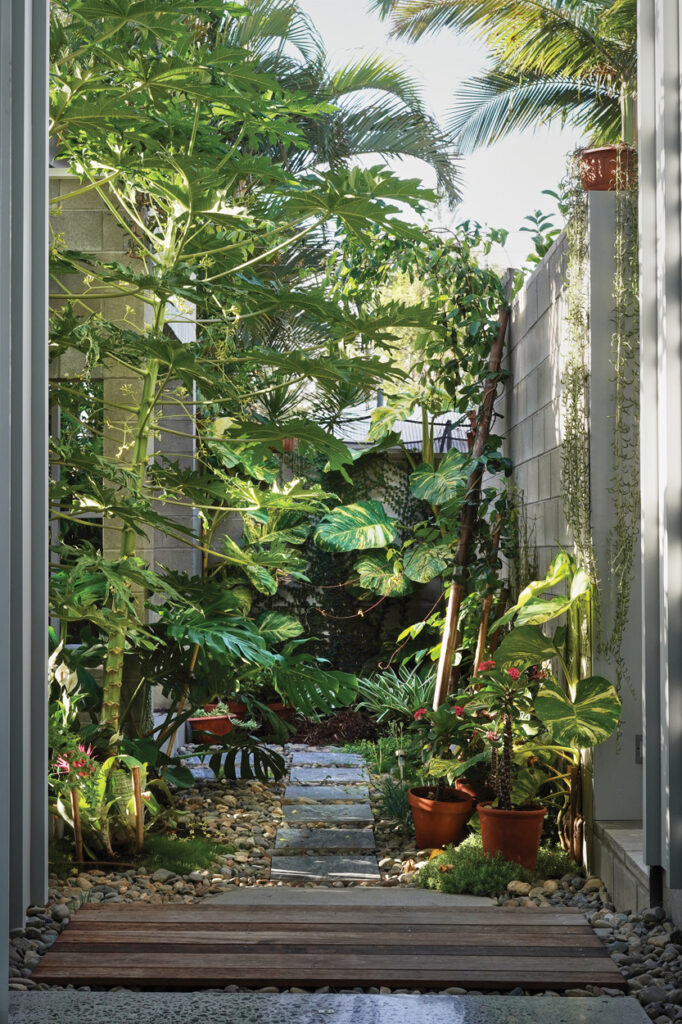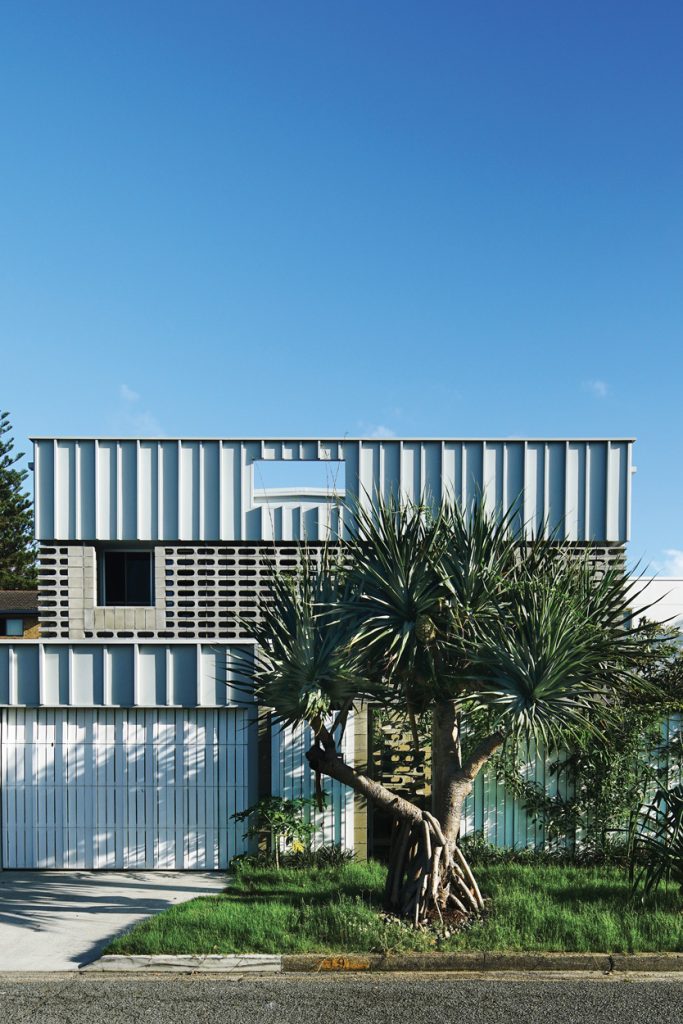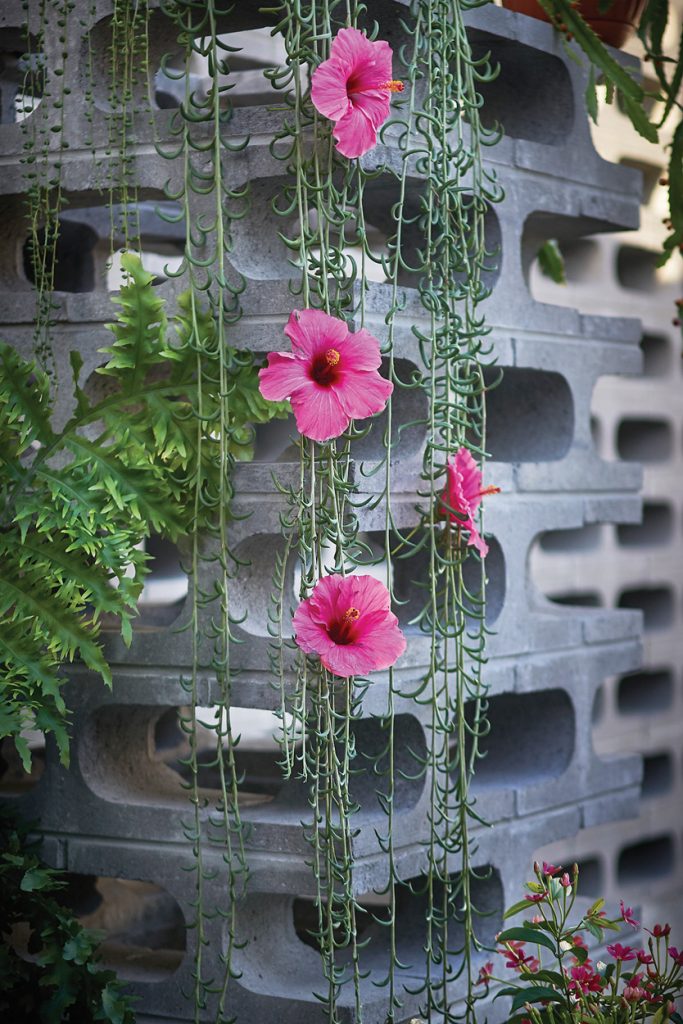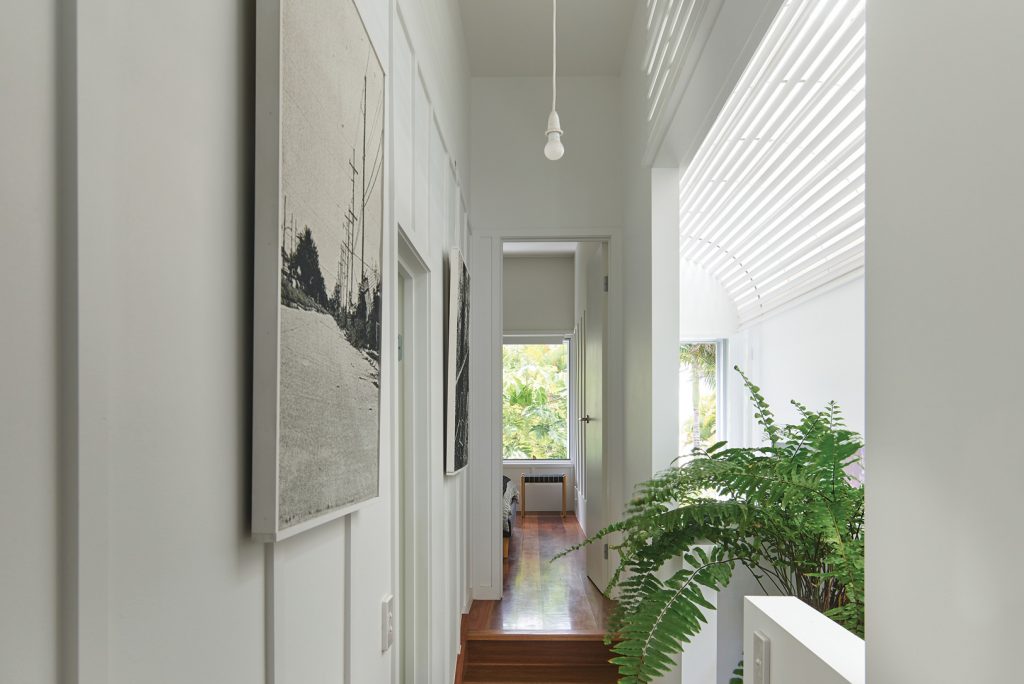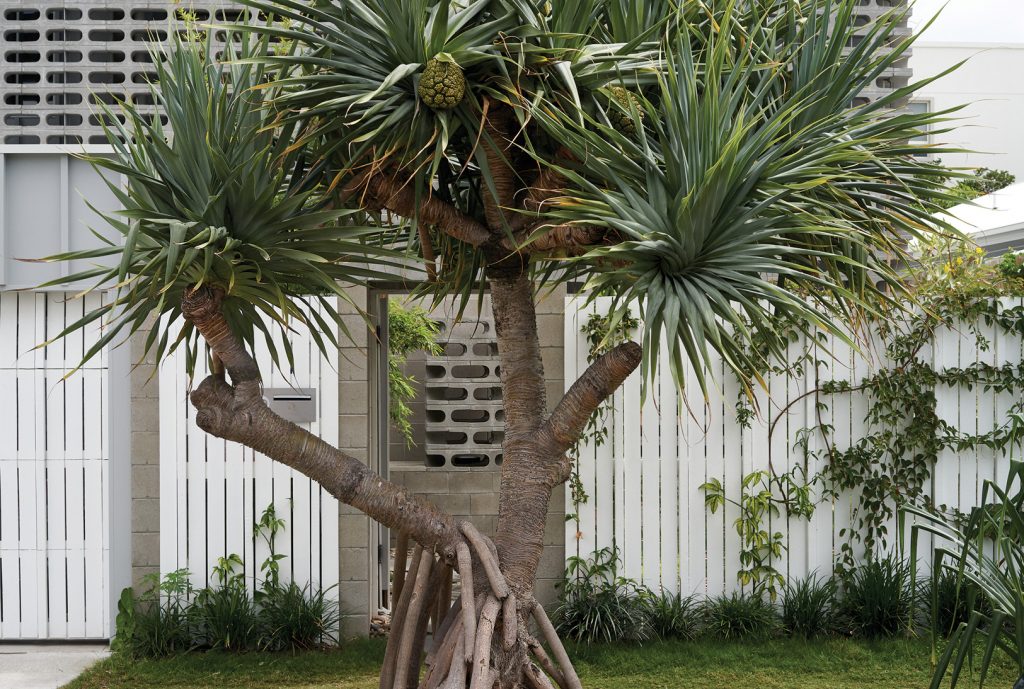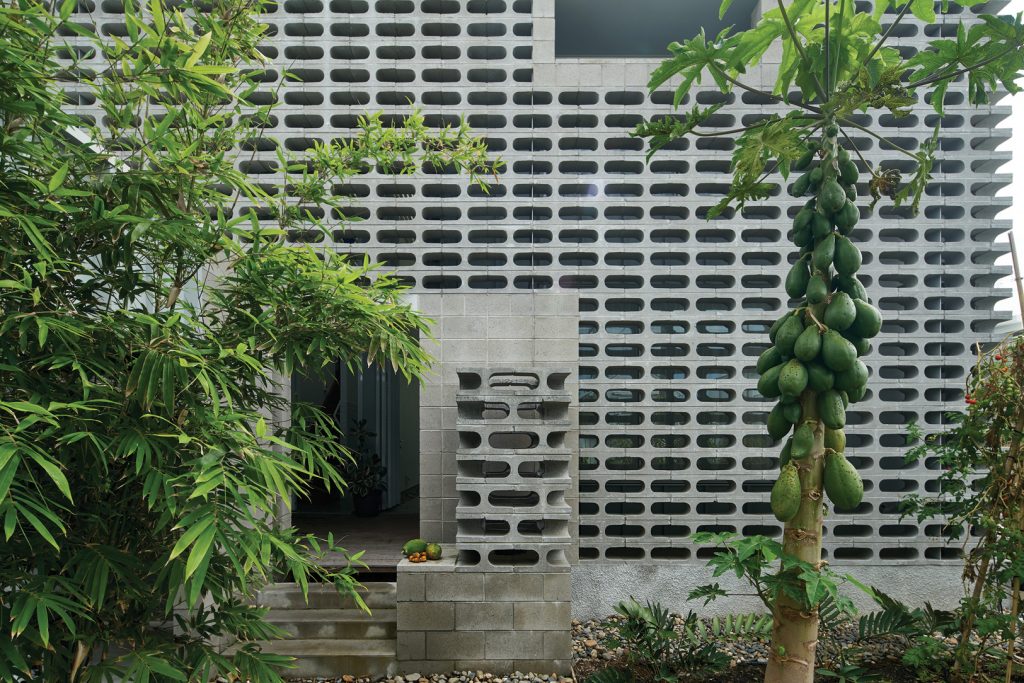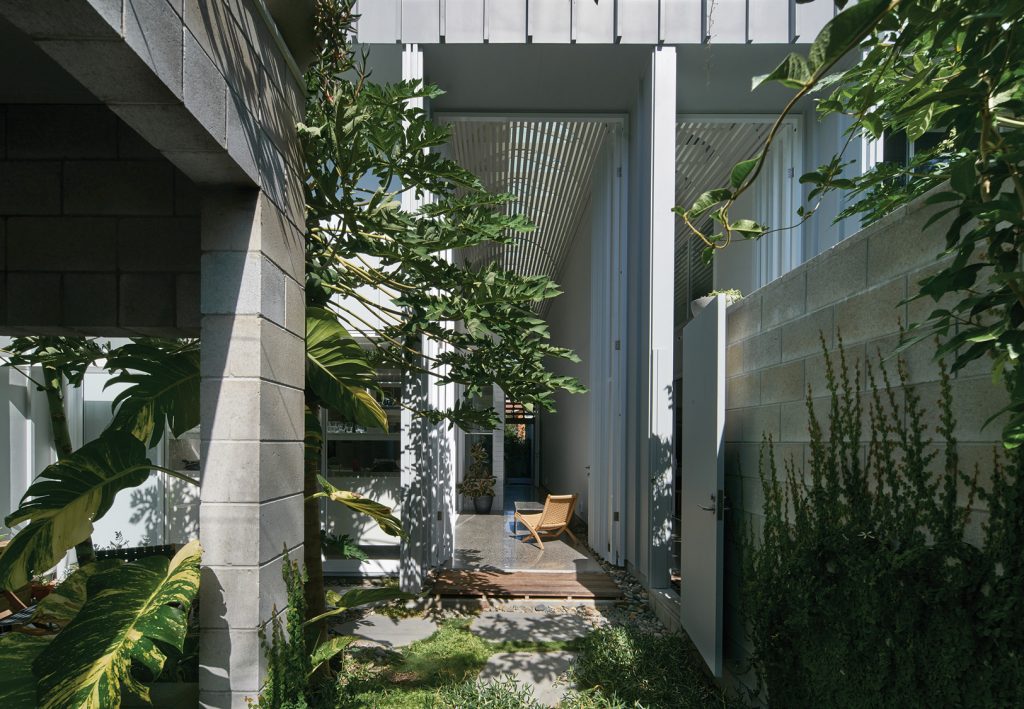Serendipity
Handing the reins over to natural intervention has led to a delightful outcome for this Mermaid Beach garden.
If you thought creating a garden that was productive, complex and a delight to occupy required anything more than intuition, Alex Chomicz has a technique that proves otherwise. His extraordinary garden emerged almost by accident, mostly self seeding from worm farm-generated compost. He explains almost apologetically that the most significant species, papaya, grew from seeds scattered in soil to become commanding trees burgeoning with fruit. These and other ‘garden variety’ plants sit in comfortable contrast to the exquisitely composed spaces and forms of his home at Mermaid Beach designed by Partners Hill with Hogg and Lamb.
“I was hesitant to do anything at first because I knew Timothy [Hill] had ideas for the garden, so I decided to set up a worm farm,” Alex explains. “I planted just a few things, mainly climbers that I knew would take over the walls and turn them green. They all started to grow like crazy because of the compost. Suddenly I had papaya coming up all over the place at an insane speed, followed by tomatoes so it was a bit like a crazy market garden for a while.” The eruption of self seeding species, although accidental, gave shape to the entry courtyard, providing greenery and establishing a visual contrast with the brutalist forms of the concrete block envelope. “The plants really brought a softening and randomisation to the rigid patterns and brutality of the block,” Alex says.
The architectural ambition of Mermaid Multi is legible from the street. It is expressed in the richness of pattern and intriguing forms achieved through the repetition of a modest and cost effective building unit: concrete block. “The whole concept of the place was about being low-budget, to build and maintain,” Alex says. The home is tuned to draw breeze and natural light to relieve energy demands required of artificial lighting or air conditioning. Shaded courtyard gardens at the front and back help to cool air circulating around the house.
In the north-facing back garden twin shade pavilions foster their own microclimate, blocking the harsh south-easterlies and capturing the low winter sun. “I use it as an outdoor office,” Alex says. “I can set up out there with a thermos of tea and I feel sheltered without walls around me.” A lime tree and travellers palm planted 15 years ago when Alex’s family bought the site contribute to the structured perimeter. These, along with the pandanus palm at the front of the house, bring a maturity to what is otherwise an organic collection of productive and subtropical plants.
“I’m anticipating that it could all go wrong one day and that it might need a more formal rethink if things don’t continue to evolve with self seeding,” Alex says. “At least there’s a bit of a foundation with all the climbers around the perimeter that you could start again in the middle and reconfigure the whole thing. Just like the house which has a warehouse-like structure, it lends itself to walls being pulled apart and the house being totally reimagined in another way.”
The ambition for the architecture to create something of textural and formal interest with modest means very much echoes the organic ways of the garden. The backdrop of concrete block bestows upon the most uncelebrated species something of a rich and sacred beauty. “Timothy [Hill] has been a few times now and seems to enjoy how thoroughly unexpected the landscape has become, even those ridiculous papayas,” Alex says. “He agreed that the way that the papaya [has] taken off, between the house and the pavilions is what he’d hoped for when he once suggested shoehorning a small grove of trees in there.”
